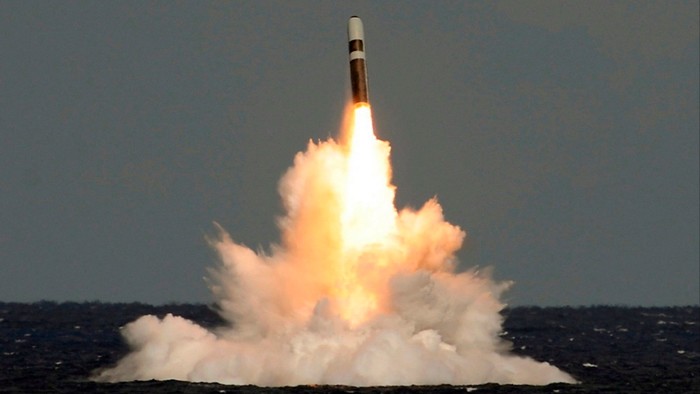Unlock the White House Watch newsletter for free
Your guide to what the 2024 US election means for Washington and the world
Donald Trump has long had a fixation with the horrors of nuclear war — and trying to prevent it. Since retaking office, the US president has said one of his priorities is to hold arms control talks with Russia’s Vladimir Putin and China’s Xi Jinping. His administration has taken the positive step of trying to reach a new agreement to curb Iran’s advancing nuclear programme. Yet contradictions among his policies threaten not to reduce nuclear risk but to lead to a new arms race — on multiple fronts.
The first danger is proliferation. The White House is justified in calling on European allies to shoulder more of their own defence burden — and has given no indication it would withdraw the US nuclear umbrella. But the chill in transatlantic relations and Trump’s embrace of Putin in efforts to end the war in Ukraine have shaken European leaders’ faith in the US commitment to extended deterrence.
Germany and Poland are publicly talking of needing nuclear options for their defence, at least by sharing the French or UK nuclear deterrents — or, in Poland’s case, potentially hosting US bombs on its soil. Emmanuel Macron has invited discussion over whether and how France’s long-independent arsenal could be used as a broader deterrent.
Concerns over US reliability are shared by allies in east Asia, wary of the nuclear threat from China and North Korea — and both countries’ deepening ties to Russia. Support for acquiring nuclear weapons is growing in South Korea, and the long-taboo debate is surfacing even in Japan. In the Middle East, Turkey and Saudi Arabia have signalled they would match Iranian capabilities if Tehran obtained a bomb. Yet despite new US efforts to prevent that, the fact Iran is now so close to its goal is largely due to Trump’s ill-judged first-term withdrawal from the 2015 international nuclear deal with Tehran.
Weapons experts warn that any US ally developing nuclear arms would start a rush by other countries to follow suit. The non-proliferation treaty, which for decades has helped to confine the number of nuclear weapons states to nine, could then be undermined.
A more immediate danger may be increasing weapons numbers among existing states — notably China. The Pentagon estimates that Beijing could double its arsenal to more than 1,000 by 2030. Meanwhile, a five-year extension to the New Start treaty, the last remaining US-Russia arms control agreement that caps the warheads and missiles each can deploy, goes out of force next February. Putin halted implementation of New Start a year after Russia’s full-scale invasion of Ukraine.
Trump dragged his feet on extending New Start during his first term, in part due to his belief that China should be brought into future nuclear agreements — which Beijing fiercely resisted on the grounds that its arsenal was too small. China’s swelling arsenal makes its arguments harder to sustain. But for the US to engage Moscow and Beijing in nuclear talks will require a sophisticated game of three-way chess. Little in the way the Trump team has handled foreign policy so far, including the Ukraine negotiations, suggests it is capable of such diplomatic finesse.
Today’s geopolitical ferment makes Britain’s nuclear deterrent appear far from the costly anachronism that critics have claimed. Though both are dwarfed by Russia’s arsenal, together with more French flexibility around its own arms it might form a European parapluie nucléaire sufficient at least to give Moscow pause and reassure Nato partners. But the Trump White House should keep in mind that any suspicion among allies that its nuclear umbrella is being folded up could trigger more countries to seek weapons. And the more that have them, the greater the danger someone will one day use one.
